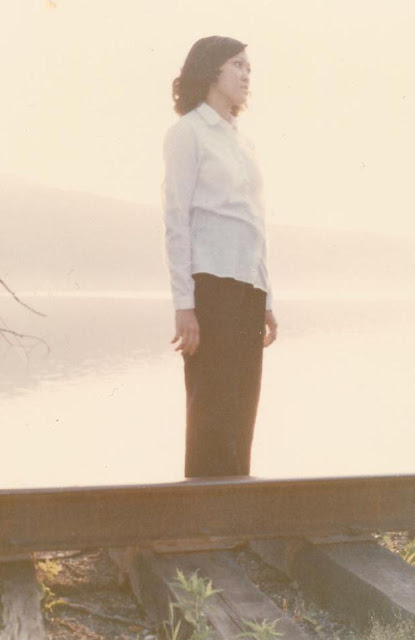The railway's alignment literally followed the eastern side of Lake Massawippi between North Hatley and Ayers Cliff, Quebec. During summer, going for a swim in the lake meant having to cross the track because much of the beach frontage was the railway right of way. The value of lake frontage was an opportunity that CP Rail did not miss out on. CP Rail leased sections of lake front to cottage owners who wanted access to the water...boulders, rocks, stones and all.
The former Massawippi Valley Railway was officially sentenced to oblivion on November 30, 1989. The National Transportation Agency granted CP Rail permission to abandon the entire rail line between Lennoxville, Quebec, and Beebe Jct. The abandonment also included the 2.4 mile Stanstead spur to Rock Island, Quebec.
Like a stay of execution, the rail line remained dormant and quietly rusted away for a few years, however, in spring 1992 the scrappers were finally called in and the railway was torn up.
Prior to the railway's demise, rumours often surfaced that part of the railway might be developed into a tourist operation, however, nothing ever came of that. Tragic. In terms of scenery, this line could have been one of the best. The Orford Express came along too late.
Today, reproducing any of these scenes is impossible.
Today, reproducing any of these scenes is impossible.
 |
| Abstract from a 1980 CP Rail employee time table |
 |
| Carload customers were non-existent. Bridge traffic and waterfront users were all that moved over this route. |
 |
| Trains were not the only attraction on the railway. Kie on a hot hazy evening with Lake Massawippi in the background in summer 1981. |
The Massiwippi Missiles, fourth class trains listed in CP Rail employee time tables as 92 southbound and 93 northbound, were for me the most challenging trains to photograph and that was in spite of the maximum track speed of twenty-five miles per hour.
In July 1984, service was down to three days per week and train times were any time. Times posted in the schedule were pure fiction. Without the aid of a car and a scanner I was forced to rely on older technologies: ears and legs. If I heard the train whistle in the distance, and hearing it depended on wind direction, I would grab my camera and race downhill on the footpath to trackside to get there first. Many attempts were necessary to finally obtain a satisfactory picture, much to the amusement of neighbours after they caught on to what was going on.
If nothing else, at least I can now identify with those crazy farm dogs that love to chase after cars.
The Oddblock Station Agent
Addendum August 30, 2017
Some days when least expected...
Over the years I've made countless futile searches for an image of a train, any train, crossing this particular railway bridge; I didn't think any existed... and this week, purely by accident, I struck pay dirt!
 |
| Found this image on the internet but the photographer wasn't identified, however the train was identified as QC 93 engine CP5025 at North Hatley December 1980. |
 |
| The same bridge in October 07, 1989, before the railway was scrapped |
Yes, this is the same North Hatley that former US president Bill Clinton visited about two weeks ago, thus putting the small picturesque town in the spotlight... for a while at least.
On this note, the image below is dedicated to politicians everywhere because the result looks to me like a typical political solution.
 |
| Is half a bridge to nowhere better than no bridge at all? I suppose the answer is a matter of opinion. |
The Oddblock Station Agent
 |
| The Beebe Subdivision in the process of being scrapped in 1992 |
















